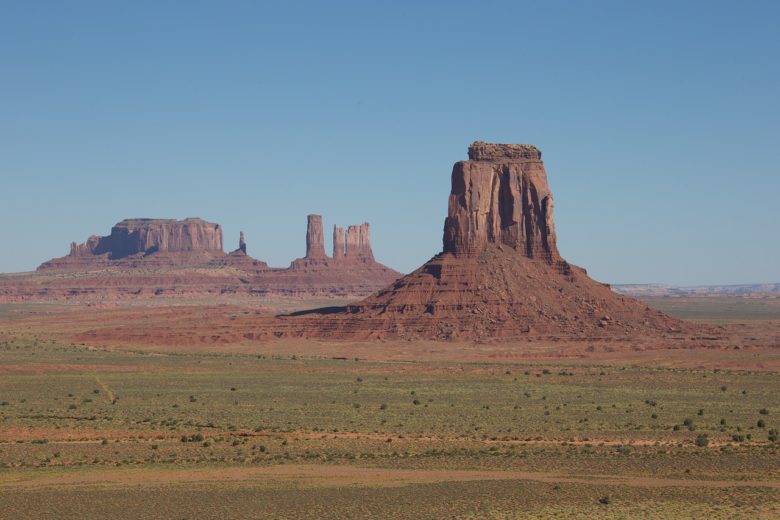
Unfortunately, Yes, the President Can Legally Reduce National Monuments
We are reader-supported. When you buy through links on our site, we may earn affiliate commission.
You read that right. The president can legally reduce national monuments at his discretion. A case in point is Trump’s recent decision to reduce two of Utah’s national monuments by considerable proportions. If you thought the Antiquities Act granted landmarks such as Bears Ears and Grand Staircase-Escalante National Monuments special protection against government interference, think again.
Although protesters have raised a public outcry and claim Trump’s decision is illegal, the president is moving forward with his decision to slash Utah’s landmarks by a remarkable two million acres. This makes it the most extensive monument cutback in United States history.
A Brief History of Bears Ears and Grand Staircase-Escalante National Monuments
If you’re unfamiliar with these famous Utah monuments, a brief understanding of their history will help you understand the debate.
Both the Bears Ears and Grand Staircase-Escalante National Monuments grant the general public access to plants and wildlife. Bears Ears also provides tribal access to a sacred land that various Native American tribes access daily.
In 2016, former President Obama declared Bears Ears a national monument to further preserve Native Americans’ access to the site. Grand Staircase-Escalante was similarly established as a protected site in 1996 to safeguard the land against unwanted damage and pollution. However, much of the controversy surrounding this monument states that the 1.3 million acres prevent the poverty-stricken area from accessing the land for more productive measures.
With Trump’s recent decision to slash Utah’s monuments by nearly two million acres, the future of Bears Ears and Grand Staircase-Escalante National Monuments remains uncertain.
What You Need to Know About the Antiquities Act
The Antiquities Act dates back over a century to when President Teddy Roosevelt passed the bill in 1906. When Roosevelt first signed the bill, he prioritized protecting the Native Americans from losing the land they held culturally sacred.
This act grants the president power to designate natural areas as monuments, protecting unique natural, scientific or cultural resources. The monuments are intended for public use and conservation.
Many claim Trump’s decision to cut Utah’s preserved land is an unreasonable breach of power because the Antiquities Act is about conservation. However, President Trump’s decision aligns with the Antiquities Act declaration that the president should protect national monuments while utilizing the least expanse of land.
The Antiquities Act does not explicitly state Trump cannot cut these significant sites into smaller proportions. In fact, various presidents who preceded Trump also decreased the size of national monuments. However, prior presidents made minor reductions to the nation’s protected areas. In contrast, Trump’s decision to reduce Utah’s monuments by several million acres is the most substantial cut in American history.
Understanding the Acts Set by Predecessors
Even if the Antiquities Act explicitly stated that future presidents could not alter protected lands, Trump’s decision may still have held some ground.
Current presidents are permitted to override specific acts established by prior officials. Even though Teddy Roosevelt passed this bill in the early twentieth century, that doesn’t mean all of his successors must abide by his every decree.
If every president succeeding Roosevelt had to adhere to the principles he established during his presidency, this would grant Roosevelt infinite authority. No policy is guaranteed a lifetime of use because laws must change to accommodate the nation’s shifting needs.
Political choices that were once upheld by those in office before Trump can change at any time. The same rule of thumb applies to Trump’s future successors, who may have the power to follow — or undo — several of the policies he establishes during his presidency.
How Trump Claims to Be Improving Utah’s Community
Rather than harming the Native American community’s access to these national lands, Trump believes his decision will assist them. When making remarks on the Antiquities Act, President Trump claimed that the monument reductions will give Natives a newfound voice when it comes to land use.
Although the president claims to have made his decision with the indigenous population in mind, various Native American tribes took the initiative in suing Trump to voice their discontent.
Unfortunately, the president’s decision to drastically reduce Utah’s monuments may be the first warning of what’s yet to come. The possibility that other states will experience monument reduction is an increasing probability.
The Dangers of Reducing National Monuments
One of the major threats toward formerly protected lands is that they could be opened up to mining, drilling, ranching or logging, which could jeopardize the native flora and fauna.
Protestors of Trump’s decision fear Bears Ears and Grand Staircase-Escalante are now at risk of this happening. Although they’re still federal property, these lands may lose their former protection against environmental damage. While Trump proclaims to have the people of Utah in mind, the future of these two historically significant areas remains up in the air.
Share on
Like what you read? Join other Environment.co readers!
Get the latest updates on our planet by subscribing to the Environment.co newsletter!
About the author

Jane Marsh
Starting from an early age, Jane Marsh loved all animals and became a budding environmentalist. Now, Jane works as the Editor-in-Chief of Environment.co where she covers topics related to climate policy, renewable energy, the food industry, and more.





